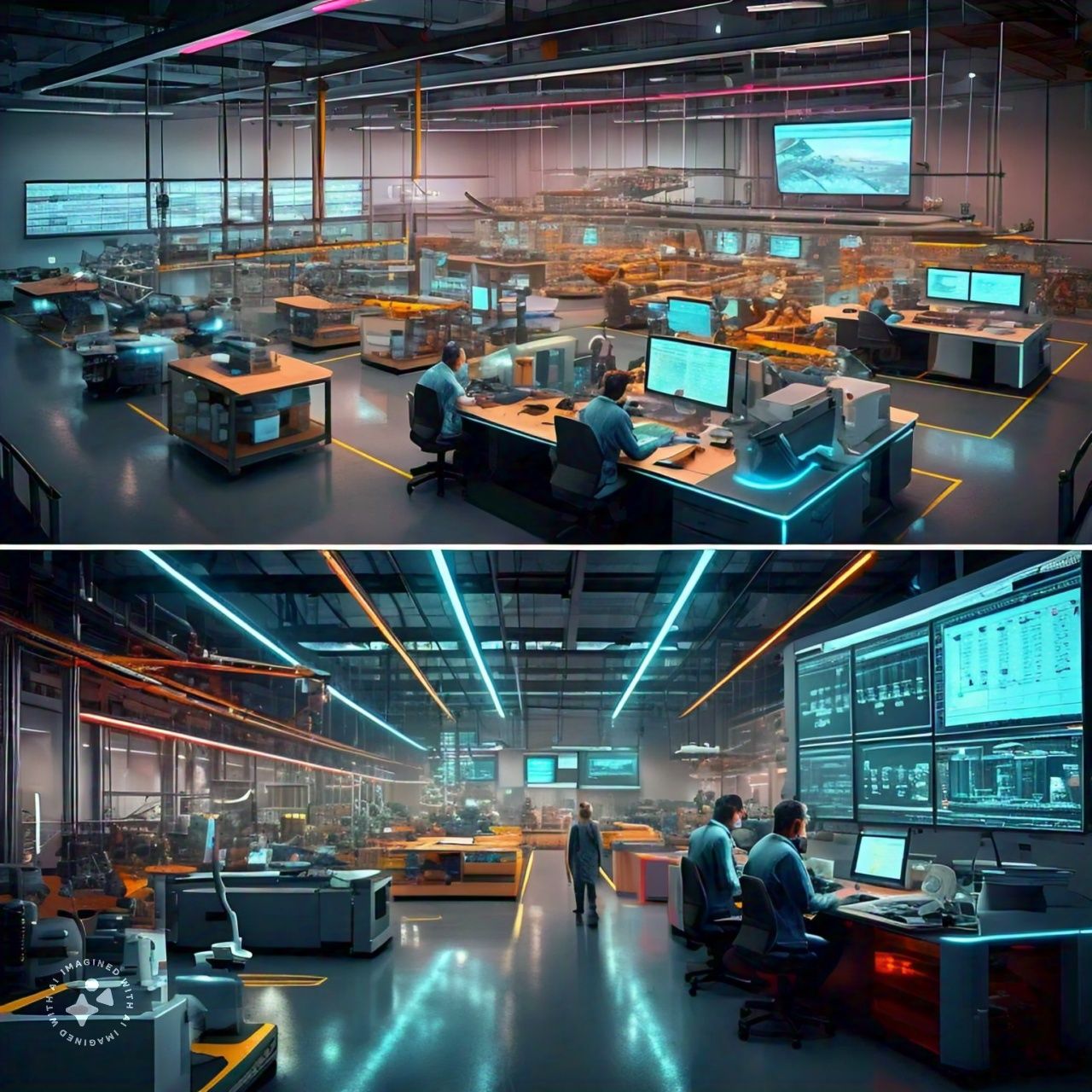Digital twins, virtual replicas of physical systems, are emerging as a transformative technology in the manufacturing and supply chain sectors. By enabling real-time data synchronization between the physical and digital worlds, digital twins are optimizing operations, enhancing predictive maintenance, and driving significant cost savings. This article explores the concept of digital twins, their applications in manufacturing and supply chain management, and the future potential of this innovative technology.
Understanding Digital Twins
What Are Digital Twins?
A digital twin is a virtual model of a physical asset, process, or system that mirrors its real-world counterpart in real time. This virtual representation is continuously updated with data from sensors, IoT devices, and other sources to reflect the current state of the physical object. The concept of digital twins extends beyond simple 3D modeling to incorporate data analytics, machine learning, and artificial intelligence, enabling advanced simulations and predictive analysis.
Historical Context and Evolution
The idea of digital twins has roots in NASA’s early space missions, where digital simulations were used to monitor and troubleshoot spacecraft. However, it wasn’t until the advent of IoT and advanced data analytics that digital twins became feasible on a large scale. Today, digital twins are utilized across various industries, including manufacturing, healthcare, and urban planning, but their impact is particularly profound in manufacturing and supply chain management.
Applications in Manufacturing
Enhancing Operational Efficiency
Digital twins offer manufacturers the ability to visualize and optimize their production processes in real time. By creating a digital replica of the production line, manufacturers can monitor equipment performance, identify bottlenecks, and simulate changes to improve efficiency. For instance, a digital twin can predict the impact of a new machine installation on production flow, allowing for adjustments before physical implementation.
Predictive Maintenance
One of the most significant advantages of digital twins in manufacturing is predictive maintenance. Traditional maintenance schedules are often based on fixed intervals, which can lead to unnecessary downtime or unexpected equipment failures. Digital twins use real-time data to predict when a machine is likely to fail, allowing for maintenance to be performed just in time. This approach minimizes downtime, extends equipment lifespan, and reduces maintenance costs.
Quality Control and Product Development
Digital twins enable manufacturers to monitor product quality throughout the production process. By analyzing data from various stages of production, manufacturers can identify defects early and take corrective actions. Additionally, digital twins facilitate product development by allowing engineers to test and refine designs in a virtual environment, reducing the time and cost associated with physical prototyping.
Transforming Supply Chain Management
Real-Time Visibility and Monitoring
In supply chain management, digital twins provide unprecedented visibility into the movement of goods. By creating digital replicas of supply chain networks, companies can monitor inventory levels, track shipments, and predict potential disruptions. This real-time visibility helps companies respond quickly to changes in demand or supply, improving overall supply chain resilience.
Demand Forecasting and Inventory Optimization
Digital twins enhance demand forecasting by integrating data from multiple sources, including market trends, sales data, and social media. Advanced analytics and machine learning algorithms process this data to provide accurate demand predictions. These insights enable companies to optimize inventory levels, reducing excess stock and minimizing the risk of stockouts.
Logistics and Transportation
The logistics and transportation segments of the supply chain benefit significantly from digital twins. By simulating various transportation routes and modes, digital twins help companies identify the most efficient and cost-effective options. Additionally, digital twins can predict potential delays due to factors such as weather or traffic, allowing for proactive adjustments to logistics plans.
Case Studies and Real-World Examples
Siemens and the Digital Factory
Siemens, a global leader in industrial automation, has been at the forefront of digital twin technology. Their “digital factory” concept leverages digital twins to create highly efficient and flexible manufacturing processes. By simulating entire production lines, Siemens can optimize operations, reduce energy consumption, and shorten time-to-market for new products.
General Electric and Predictive Maintenance
General Electric (GE) uses digital twins extensively in their aviation and power sectors. For instance, GE’s digital twins of jet engines monitor performance and predict maintenance needs. This predictive maintenance approach has significantly reduced downtime and maintenance costs, improving overall operational efficiency.
DHL and Supply Chain Visibility
DHL, a global logistics company, employs digital twins to enhance supply chain visibility. By creating digital replicas of their logistics networks, DHL can monitor shipments in real time, predict potential disruptions, and optimize delivery routes. This technology has improved DHL’s ability to meet customer demands and reduce operational costs.
Challenges and Future Directions
Data Integration and Management
One of the primary challenges in implementing digital twins is the integration and management of vast amounts of data. Ensuring data accuracy, consistency, and security is crucial for the effective functioning of digital twins. Companies must invest in robust data infrastructure and cybersecurity measures to address these challenges.
Standardization and Interoperability
As digital twin technology evolves, there is a growing need for standardization and interoperability. Different systems and platforms must be able to communicate seamlessly to create a unified digital twin ecosystem. Industry-wide standards and protocols will be essential to achieve this interoperability.
Advancements in AI and Machine Learning
The future of digital twins will be shaped by advancements in AI and machine learning. These technologies will enable more sophisticated simulations and predictive models, further enhancing the capabilities of digital twins. Additionally, the integration of augmented reality (AR) and virtual reality (VR) will provide immersive experiences, making it easier to interact with and analyze digital twins.
Conclusion
Digital twins are revolutionizing manufacturing and supply chain management by providing real-time insights, optimizing operations, and enabling predictive maintenance. As the technology continues to evolve, its applications will expand, driving further efficiencies and innovations across industries. Embracing digital twins will be crucial for companies looking to stay competitive in an increasingly digital and data-driven world. By investing in this transformative technology, manufacturers and supply chain managers can unlock new levels of performance, agility, and resilience.
